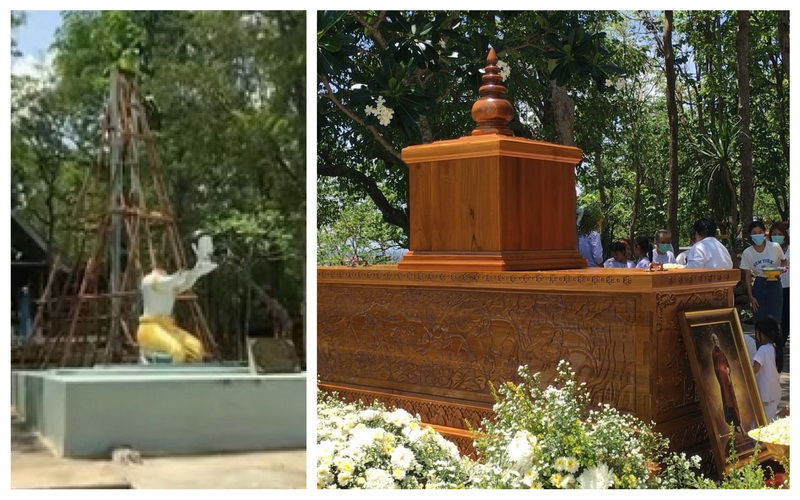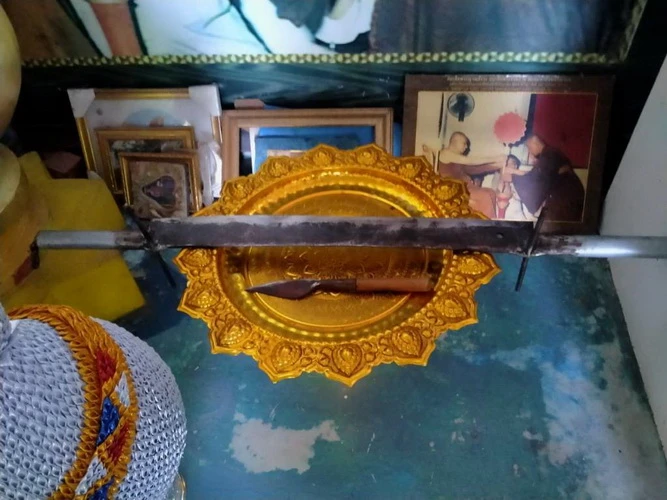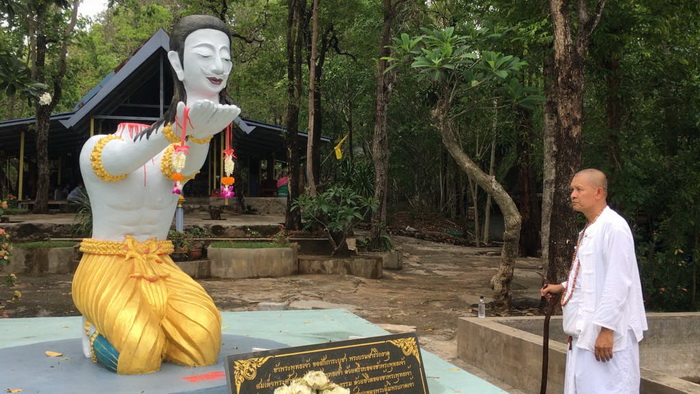A temple abbot who used a DIY guillotine to behead himself in hope of attaining enlightenment might have misinterpreted some things along the way, Thailand’s religious authorities said yesterday.
While most people give money or free captive birds, Dhammakorn Wangphrecha believed the ultimate way to make merit was with one’s head, so he practiced what he preached on Thursday, cutting ropes to bring down the meter-long blade of his homemade guillotine.
The National Buddhism Office disagreed with his methods.
Office spokesman Sipbowon Kaeo-ngam said the actions of the abbot of Wat Phuhingong Monastery in northeastern Nong Bua Lamphu province were “a private matter,” in part because he had quit the monkhood prior. But he added that black magic, spells and rituals inconsistent with Buddhist teachings were banned from practice, adding that the government religious authority would redistribute the correct, beheading-free teachings to temples nationwide.
“Temple executives and abbots should review their practices and look after other monks in their temples. This incident is possible evidence of neglecting to do so,” he said. “We have to prevent such unpleasant situations from happening again.”
Contacted today, an office rep who wouldn’t give his name because he wasn’t authorized to talk to the media confirmed that Dhammakorn had already left the monkhood before Boonchert Boonrod found his 68-year-old brother’s body Thursday morning.
Boonchert said Dhammakorn was fulfilling a five-year plan when he executed himself at precisely 5:19am that day, which was Dhammakorn’s birthday, near a statue of the god Indra reaching out to offer up his own decapitated head. Others were praying in a pavilion just meters away at the time.
As for the guillotine, he said Dhammakorn and his disciples built it earlier this month. Boonchert said that Dhammakorn used a small knife to cut ropes holding up the buckets, which were filled with cement, on each side of the blade.
Dhammakorn had taught that dying this way would grant enlightenment and make one a Buddha in the next lifetime, according to his followers. Therefore, no one was really surprised when he went through with it, and they quickly held a funeral. According to Thairath, the abbot had written about his intentions four days earlier in a suicide note.

His brother and followers said Dhammakorn was lucid and not mentally ill. Local police did not respond to several calls seeking comment but were said to be considering whether to file charges against those who aided Dhammakorn.
Phukaoanan Suanbharameetham said that Dhammakorn’s actions were a valid form of merit making, as the Tripitaka says monks can practice in different ways.
Since the news broke, however, famed monks such as Phra Ratchdhamanithet, Pramaha Vuttichai Wachiramatee and Phramaha Paivan Warawoonno have come out to say Dhammakorn misread the teachings. Phra Ratchdhamanithet said he’s never encountered any scripture that encourages self-decapitation, arguing that Dhammakorn could be “the first in the country or even the world” to behead himself for enlightenment.
Pagan practitioner Atiwan Kongsorn, owner of a Bangkok occult cafe, said today that those who really understand religion and spirituality would understand that self-mutilation and harm aren’t new, and people shouldn’t rush to condemn Dhammakorn as sinful. He said Buddhist monks used to gouge out their eyes, leap into fires and drink poison to attain higher knowledge.
Local police were said to still be investigating today as nuns and laypeople cleaned the monastery. The police recovered the two red buckets Dhammakorn allegedly used and different parts of the guillotine, which had been dismantled and dispersed around the monastery.






